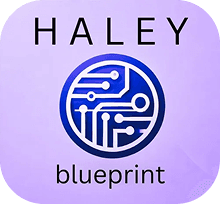How to Use HALEY to Apply PCAOB Standards to Control Design
 Step 1: Identify the PCAOB Standard You Need Help With
Step 1: Identify the PCAOB Standard You Need Help With
Start with:
“Explain PCAOB AS 2201’s impact on ITGC testing for Oracle EBS”
“How would AS 1105 enhance audit detection related to an ITAC?”
“Explain PCAOB AS 2201’s impact on ITGC testing for Oracle EBS”
“How would AS 1105 enhance audit detection related to an ITAC?”
- Full text of applicable standard
- AI-generated summary
- Tech-specific control implications
- Examples & evidence expectations
 Step 2: Map PCAOB Criteria to Your Control Environment
Step 2: Map PCAOB Criteria to Your Control Environment
Ask:
“Explain how AS 2201 maps to logical access control in SAP.”
“Apply AS 1105 criteria to evidence routines for SOX application controls.”
“Explain how AS 2201 maps to logical access control in SAP.”
“Apply AS 1105 criteria to evidence routines for SOX application controls.”
- Translate PCAOB criteria to relevant risk/control
- Highlight impacted roles, apps, evidence, etc.
- Recommended risk/control template
 Step 3: Validate Control Precision, Frequency, and Documentation
Step 3: Validate Control Precision, Frequency, and Documentation
Ask HALEY:
“Is this control high-precision under AS 2201?”
“How often must this ITGC be performed to meet AS 1105 requirements?”
“Is this control high-precision under AS 2201?”
“How often must this ITGC be performed to meet AS 1105 requirements?”
- Precision (judgment required and level of aggregation)
- Frequency (real-time vs. batch vs. quarterly)
- Evidence sufficiency (screenshots, logs, reviewer sign-off)
 Step 4: Evaluate for Material Weakness Risk
Step 4: Evaluate for Material Weakness Risk
Ask:
“Does this control failure meet the PCAOB definition of a material weakness?”
“Help me assess a deficiency under AS 2201 criteria.”
“Does this control failure meet the PCAOB definition of a material weakness?”
“Help me assess a deficiency under AS 2201 criteria.”
- Whether the deficiency could result in a material misstatement
- If it’s a design or operating failure
- What mitigating or compensating controls may apply
 HALEY Use Case Example
HALEY Use Case Example
Prompt:
“Apply AS 2201 to an ITGC for user access reviews in Oracle Risk Management Cloud.
Include risks, controls, and required evidence.”
“Apply AS 2201 to an ITGC for user access reviews in Oracle Risk Management Cloud.
Include risks, controls, and required evidence.”
- Risk: Unauthorized access to financially significant systems
- Control Objective: Access rights are appropriate based on job role
- Control Activity: Quarterly user access reviews documented and certified by system owners
- Evidence per AS 1105: Audit logs, review sign-off reports, exception resolution documentation
- Testing Guidance: Verify completeness of user list, accuracy of reviewers, resolution of flagged exceptions
 Common Pitfalls to Avoid
Common Pitfalls to Avoid
Don’t Do This:
- Explain AS 2201 without linking to a control.
- What’s PCAOB? (too broad)
- Design a control with no mention of SOX.
 Pro Tip: Reference Both PCAOB + COSO
Pro Tip: Reference Both PCAOB + COSO
When designing controls, add COSO principles to your PCAOB prompt:
“Apply AS 2201 and COSO Principle 10 to user access controls in Oracle ERP.”
“Apply AS 2201 and COSO Principle 10 to user access controls in Oracle ERP.”
- This ensures both regulatory frameworks are satisfied—HALEY will align the control design accordingly.
